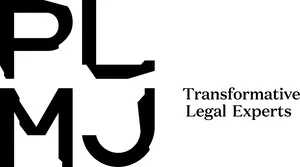1. The Gigabit Infrastructure Act and 5G: driving digital competitiveness in the EU
The Gigabit Infrastructure Act 1 ("GIA") which replaces the 2014 Broadband Cost Reduction Directive ("BCRD") entered into force in May 2024 2. This new legislation is an important milestone in the European Union's strategy to achieve a robust and competitive digital infrastructure by 2030.
5G technology has emerged as a factor contributing to the deployment of networks, a true catalyst for digital transformation
1.1. WHAT IS THE SIGNIFICANCE OF THE GIA AND 5G?
The main objective of the GIA is to facilitate the deployment of gigabit networks in the European Union (EU) and improve access to existing infrastructure through a simplified installation process. This aim of this initiative is to ensure that Europe maintains its global digital competitiveness, especially in a scenario where high quality connectivity is essential for industrial competitiveness and for the digital and environmental transition. In this context, 5G technology has emerged as a factor contributing to the deployment of networks, a true catalyst for digital transformation in all sectors of the economy.
The main benefits of 5G are its ability to boost Europe's digital competitiveness and digital inclusion. 5G has the potential to significantly reduce the digital divide, especially in rural and remote areas. Continued investment in infrastructure is essential to ensure that all citizens, regardless of their location, can benefit from ultra-fast connectivity.
Sustainability is also a priority. 5G must be energy efficient, reducing the energy consumption of networks and enabling sustainable connectivity. This energy efficiency is critical to reducing operational costs and promoting greener connectivity. 3
1.2. HOW DOES THE GIA STREAMLINE NETWORK IMPLEMENTATION?
The GIA presents several measures3 to optimise network deployment:
- Infrastructure sharing
Encouraging the sharing of ducts and masts for the deployment of Very High Capacity Networks (VHCN) in order to optimise resources and reduce costs. expanding and upgrading network infrastructure requires significant technical and financial investment. However, investing in more efficient technologies with lower operating costs, such as 5G, can reduce costs in the long term. - Simplifying administrative processes
Simplifying administrative procedures related to network deployment and access to physical infrastructure across the EU to reduce red tape and increase efficiency. This will catalyse the roll-out of gigabit and 5G networks. - Equipping buildings with high-speed
infrastructure
Encouraging the provision of high-speed infrastructure in buildings and guaranteeing access to it, thus facilitating the spread and use of broadband.
1.3. LEGISLATIVE AND REGULATORY DEVELOPMENTS
In particular, the deployment of 5G networks continues to be a key point for the growth of the sector, with regulators considering issues related to spectrum allocation, security standards and privacy concerns related to 5G infrastructure.
The roll-out of 5G in Portugal began in 2020, following the auction of 5G licences awarded by ANACOM 4. 5G coverage is already available in the main cities and operators continue to expand their networks.
The 5G Strategy Resolution 5 defines the guidelines for the deployment of this technology, with the aim of boosting competitiveness, facilitating the digital transition and ensuring that 5G is available in urban and rural areas, benefiting sectors such as health, industry and smart cities. The resolution also sets targets for coverage, innovation and sustainable economic development, and encourages cooperation between the public and private sectors to maximise the benefits of the new infrastructure.
The 5G Strategy Resolutiondefines the guidelines for the deployment of this technology, benefiting sectors such as health, industry and smart cities.
The European Commission is focused on ensuring that 5G reaches the whole of Europe by 2025.
1.4. THE POSITION OF THE EUROPEAN COMMISSION
The continued implementation of European legislation on 5G and the concern to ensure that the networks used are secure are fundamental to the success of this initiative 6. The European Commission is focused on ensuring that 5G reaches the whole of Europe by 2025, ensuring rural inclusion and territorial cohesion 7. Investments must also comply with network security rules to ensure that the digital infrastructure is resilient and secure.
1.5. POSITION OF THE PORTUGUESE LEGISLATURE
With the support of EU funding and the public tender for the coverage of the "white zones", the Portuguese government is prioritising and targeting the development of digital infrastructure in rural areas
The emphasis is on the need for resilience and security in electronic communications networks to ensure that all regions of the country can benefit from high-speed connectivity.
1.6. IMPACT OF THE GIA ON INDUSTRY AND ON THE PORTUGUESE MARKET
The GIA is expected to have a significant impact on the electronic communications sector and the single market in a number of areas:
- Competition and consumer benefits
The deployment of high-speed networks will increase competition between electronic communications operators, benefiting consumers who will have access to more competitive prices 8. - New services and opportunities
New infrastructures open the door to innovation in digital services. Businesses will generally have the opportunity to exploit these technologies and subsequently offer new products and services 9. - Development of rural areas
Implementing specific measures to promote the deployment of these technologies in rural areas, the GIA will contribute to the reduction of the digital dividend and to local economic development 10. - Economies of scale and legal certainty
Harmonising rules at European level, operators and manufacturers will be able to achieve better economies of scale, thereby reducing operating costs 11.
2. The space sector
The space sector has become increasingly prominent on the regulatory agenda, with the European Union, the Portuguese government and private individuals working together effectively to promote growth and innovation. The European Union recognises this sector as a real driver of technological progress and economic development, as reflected in the EU Space Strategy and Programme. To consolidate Portugal's presence in the sector, the government has adopted various initiatives, such as joining the European Space Agency ("ESA") and supporting innovation centres and start-ups in the sector.
Portugal has attracted international companies that excel in space activities, positioning itself as a strategic hub in this sector.
In addition, Portugal has attracted international companies that excel in space activities, positioning itself as a strategic hub in this sector. This development will make a significant contribution not only to the Portuguese economy, but also to the development of space technologies in Europe.
For its part, ANACOM has focused its actions on strengthening its powers and creating a regulatory framework that ensures the safe and efficient use of space. The success of ANACOM's strategy, as set out in its Strategic Plan for 2024-2026 12, could not only strengthen Portugal's position in the space and communications sectors, but also serve as a model for other countries seeking convergence in the regulation of these two sectors.
2.1. AMENDMENT TO THE REGULATION ON ACCESS TO AND EXERCISE OF SPACE ACTIVITIES
In this context, in October 2024, ANACOM adopted a new amendment to the Regulation on Access to and Exercise of Space Activities (Regulamento Relativo ao Acesso e Exercício de Atividades Espaciais – "RAE") 13. Prior to the amendment of the RAE, between July and September 2024, ANACOM conducted a public consultation that allowed the participation of various interested parties, including the National Civil Aviation Authority (Autoridade Nacional da Aviação Civil - "ANAC") and the Portuguese Space Agency. The contributions received reflected the urgency of creating a regulatory framework that not only ensures safety, but also promotes innovation and growth in the space sector 14.
2.2. DETAILS OF THE CHANGES TO THE RAE
The consultation process allowed stakeholders to make important suggestions and comments which have been taken into account by the regulator:
- Special licensing arrangements
ANACOM highlighted the need to establish special arrangements for experimental and scientific operations in order to facilitate the simplification of procedures, and this proposal was accepted. As a result, the RAE now provides for special licensing arrangements with reduced time limits and simplified procedures for scientific and experimental operations. - Joint licensing
it was suggested that there should be a single licensing procedure for operations carried out by several operators in order to increase efficiency and cooperation between the parties involved. This proposal was also accepted by ANACOM. From now on, there will be a single procedure for licensing operations carried out by multiple operators. - Security requirements
as various stakeholders have stressed the importance of security plans that integrate cybersecurity and environmental considerations, ANACOM approved a number of changes that extend the requirements applicable to security plans. These must now include aspects related to cybersecurity and operational risk mitigation. - Coordination with other authorities
as coordination between ANACOM and ANAC was identified as essential for the integrated and safe management of space activities, during the public consultation, ANACOM undertook to ensure this coordination with airspace regulators.
The changes approved by ANACOM aim not only to modernise and strengthen the regulatory framework for space activities in Portugal, but also to create an environment conducive to innovation and the sustainable development of the sector.
3. White Zones Tender: a decisive step for rural connectivity in Portugal
3.1. WHAT IS THE INITIATIVE ABOUT?
The White Zones Tender 15 is an ambitious initiative by the Portuguese government aimed at bringing fibre-optic connectivity to rural and low-density areas, known as "white zones", which currently lack high-capacity network coverage. This project, with a total investment of approximately €425 million – around €150 million from the Regional Programmes of Portugal 2030 and the remainder from national funds – seeks to cover over 400,000 homes in different interior regions by 2026/2027 16.
The White Zones Tender is an ambitious initiative by the Portuguese government aimed at bringing fibre-optic connectivity to rural and low-density areas.
The main objective of this competition is to ensure that all areas of the Portuguese mainland have access to high-capacity networks, thus promoting digital inclusion and territorial cohesion. The goal is ambitious: to achieve full coverage of the mainland by 2026/2027.
3.2. POTENTIAL CANDIDATES AND COVERED INFRASTRUCTURES
The participation of various players, including both Portuguese and international operators, will be fundamental to the success of this project.
The potential candidates are more likely to be electronic communications infrastructure companies. As the tender is international, there is also the possibility for foreign companies to participate.
Despite the clear interest of some operators in using the networks to be built, there has been criticism of the inclusion of 5G mobile networks in the definition of white zones, arguing that this approach may not be the most effective. Operators have also raised concerns about the potential duplication of infrastructure, which could lead to an inefficient use of available resources, and the inadequacy of subsidies to cover the costs associated with the roll-out of electronic communications networks.
The proposed technologies are in line with the European Commission's guidelines for the roll-out of high-speed networks.
In response to these criticisms, ANACOM justified the inclusion of 5G by its ability to provide services equivalent to those of fixed networks. ANACOM believes that the proposed methodology for identifying white zones aims to avoid duplication of infrastructure and that the proposed technologies are in line with the European Commission's guidelines for the roll-out of high-speed networks. ANACOM also stressed that the analysis carried out takes into account future coverage plans in order to avoid network overlaps in the event of future investments by other operators.
To view the full article click here
Footnotes
1 Regulation of the European Parliament and of the Council on measures to reduce the cost of deploying gigabit electronic communications networks, amending Regulation (EU) 2015/2120 and repealing Directive 2014/61/EU (Gigabit Infrastructure Act).
2 Press release from the Council of the European Union, Gigabit Infrastructure Act: Council and Parliament strike a deal for faster deployment of high-speed networks in the EU.
3 European Parliament Resolution of 1 June 2017 on internet connectivity for growth, competitiveness and cohesion: European gigabit society and 5G.
4 Regulation 987-A/2020, Regulation of the Auction for the Allocation of Rights of Use for Frequencies in the 700 MHz, 900 MHz, 1800 MHz, 2.1 GHz, 2.6 GHz and 3.6 GHz bands.
5 Council of Ministers Resolution 7-A/2020 approving the strategy and timetable for the roll-out of fifth generation mobile communications.
6 European Commission, Gigabit Infrastructure Act.
7 The European 5G Annual Journal 2023.
8 GIA Recital 49.
9 GIA Recital 62.
10 GIA Recital 1.
11 GIA Recital 53.
12 See ANACOM's Multiannual Activity Plan 2024-2026.
13 Regulation 1206-A/2024 of 21 October.
15 ANACOM Public consultation on the coverage of 'white areas' with very high capacity fixed networks.
The content of this article is intended to provide a general guide to the subject matter. Specialist advice should be sought about your specific circumstances.



